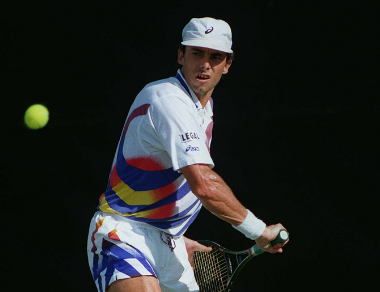This is the third in a series of articles in which Dave Miley shares his 10 proposals that he believes can make a difference in tennis from the high performance/professional to the recreational player playing at club level.
5: Play Davis Cup and Fed Cup over 2 years.
Having worked for the ITF for 25 years, I know the importance of Davis Cup and Fed Cup. My Grandfather was a top Irish player in the 1920s and played the Championships at Wimbledon in 1927, a club that I am proud to be a member of today and was also a member of the first Irish Davis Cup team after Irish independence in 1923 that played against India. Tennis and Davis Cup is in my DNA.
It is obvious to all involved in tennis that the current format for Davis Cup and Fed Cup needs some changes as there are many challenges including insufficient lead up and preparation time for each match. But the current changes being proposed by the ITF of 18 teams playing over one week, in my opinion, risks destroying the competition. The many reasons why this format would not be good for tennis have been articulated very well over the past month in the media and so I will not repeat the reasons again here.
I would suggest, instead, playing World Group Davis and Fed Cup over two years. First year would be a round robin format with 16, 24 or 32 teams in the world group. Year two would see knockout stages with the 8 best teams progressing to quarter finals and the other teams playing off for promotion/relegation. The advantage would be that you can plan and promote in advance the first year’s matches and, where necessary, book suitable stadiums. This format also has the advantage that Davis and Fed Cup can be run using the same format and number of teams and it releases a week on the calendar from the Davis Cup event each year which links to point number 6 below. This format maintains home and away, which to me is fundamental, and will be more attractive to sponsors and likely to generate significantly more income and interest than the current format played over one year.
6: Introduce an ITF World Championships for men and women played every 2 years.
Every International Sports Federation organises a World Championship for its sport. Tennis is an exception among Olympic sports when it comes to this. On paper the ITF has four World Championships as the Grand Slams are recognised World Championships of the ITF. But I think the ITF need something else that they own and run for the good of tennis. With the Davis Cup format outlined above, a week would be released on the calendar and so it would be possible to organise a 64-draw ITF World Championship, every two years in non-Olympic years. This event could be the equivalent of the current combined 1000 events on the ATP tour but with men and women playing together like in the Olympics. Some spots could be available in the draw for Regional participation through regional events to create more global links to the event. By not playing in Olympic years, the already cluttered Olympic year calendar would be left with one week less which would be a good thing.
In my opinion, the perfect place for this ITF World Championships to be held would be in a region that currently does not host a big professional tennis event like Asia, Africa and South America with the possibility of the event rotating location every 2 years. The event could offer substantial prizemoney for the top players and bring significant new income to the ITF that could be then used for development of tennis especially in those nations and regions lacking resources.
- Professional Tennis
- International Junior Tennis
- ITF events including Davis Cup and Fed Cup
- Increasing Tennis Participation worldwide
- Working Together for the good of the game



